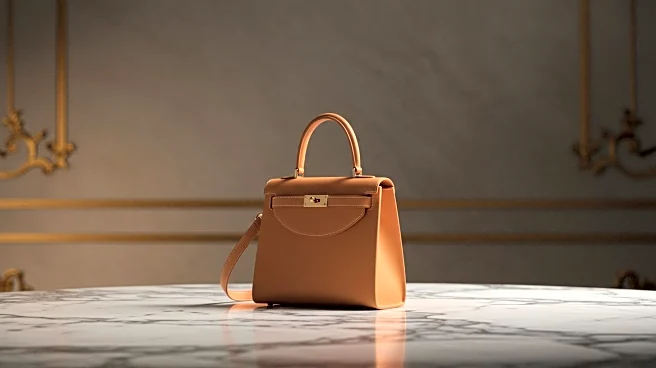What's Happening?
The secondhand luxury market is experiencing significant growth as consumers increasingly purchase pre-owned Hermès bags, such as Birkins and Kellys, to diversify their assets. According to Reklaim, a platform specializing in secondhand luxury goods, Hermès, Chanel, and Goyard are among the top-selling brands. The platform has reported an 8 to 15 percent increase in sales for these brands over the past year. This trend is driven by the economic uncertainty, prompting consumers to seek timeless luxury items that retain or appreciate in value. The Bain-Altagamma Luxury Goods Worldwide Market Study indicates that the secondhand luxury market grew to approximately $56 billion in 2024, highlighting its role as a gateway for aspirational customers who cannot afford new luxury items.
Why It's Important?
The shift towards secondhand luxury goods reflects broader economic trends and consumer behavior changes. As the economy faces volatility, consumers are looking for ways to invest in assets that offer stability and potential appreciation. The secondhand market provides an opportunity for consumers to access luxury goods at more affordable prices, while still enjoying the prestige associated with high-end brands. This trend also impacts the primary luxury market, as brands like LVMH and Kering experience a decline in sales. The growing secondhand market challenges traditional luxury retailers to adapt their strategies to maintain relevance and capture consumer interest.
What's Next?
As the holiday season approaches, Reklaim anticipates a shift in consumer preferences towards brands like Louis Vuitton, Gucci, Prada, and Saint Laurent. This change is expected to be driven by budget-conscious gift-givers seeking recognizable and timeless styles at competitive prices. The potential implementation of tariffs could further influence consumer behavior, as shoppers may turn to the secondhand market to avoid price increases on new luxury items. Luxury brands may need to consider strategies to engage with the secondhand market, either through partnerships or by offering their own pre-owned collections.
Beyond the Headlines
The rise of the secondhand luxury market also raises questions about sustainability and ethical consumption. As consumers become more environmentally conscious, the appeal of purchasing pre-owned items aligns with efforts to reduce waste and promote circular fashion. Luxury brands may need to address these concerns by enhancing transparency in their supply chains and exploring sustainable practices. Additionally, the secondhand market's growth could lead to increased scrutiny regarding the authenticity and provenance of luxury goods, prompting platforms like Reklaim to invest in robust verification processes.













